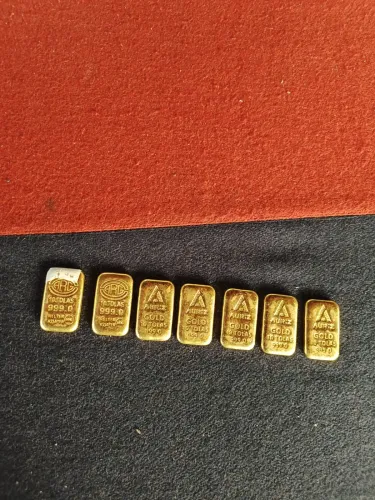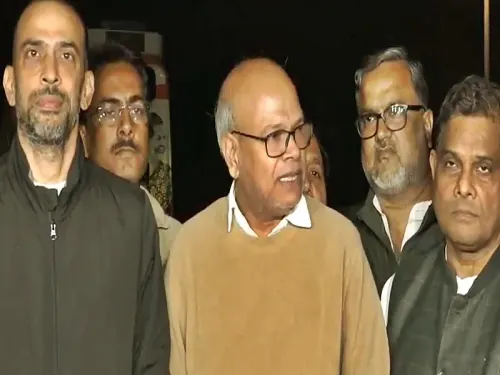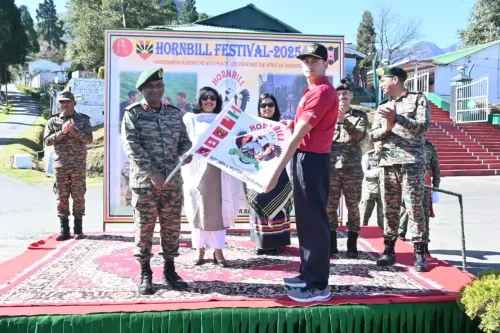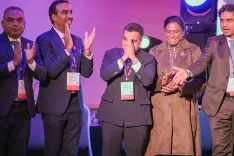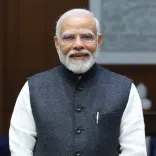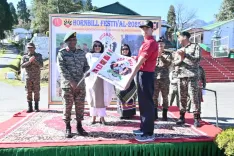A Unique Insight into a Religious Tradition After Four Decades in Shimla's Sea of Devotion
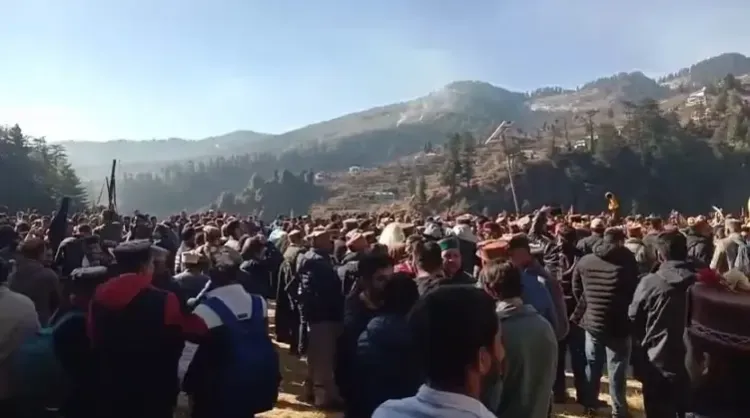
Shimla, Jan 2 (NationPress) The Upper Shimla area in Himachal Pradesh is currently experiencing a remarkable and age-old religious tradition as the esteemed deity Devta Bakralu conducts the “Bhunda Mahayajna.” This grand event, which is believed to occur once every four decades, gathers deities from the Spail Valley, showcasing the region's vibrant cultural heritage.
The ceremony, characterized by processions of deities transported in intricately designed palanquins accompanied by the sounds of trumpets and drums, serves as an appeal for peace, prosperity, and protection from natural disasters. Devta Bakralu resides in a temple located in Dalgaon village in Rohru tehsil, 135 km from Shimla, constructed in traditional hill architecture using wood and slate.
The centerpiece of the ceremony is the rope-sliding ritual, which was inaugurated last year by cutting “munji,” a grass that grows in hard-to-reach mountain areas. A “jedi” (a member of the Beda caste) creates a sacred rope made of “munji,” following strict rituals of celibacy and silence.
During the yajna, the divine oil-soaked rope extends for 1 km between two hills, crossing a ditch. The jedi, seated on a wooden raft, performs a breathtaking slide down the rope.
Surat Ram, a seasoned performer, is set to undertake this ritual for the ninth time on January 4. Approximately five lakh people, including Chief Minister Sukhvinder Sukhu, are anticipated to attend the event. In the previous “Bhunda Mahayajna” held in 1985, Surat Ram encountered challenges while crossing the “valley of death” on a raft while sliding down the rope vertically.
Surat Ram informed IANS that it took two and a half months to prepare the sacred rope this time, aided by four individuals. The rope preparation adheres to strict celibacy. After eating at four in the morning, he would not eat again until the next day. During this period, utmost silence is maintained.
Panchayat head Visheshwar Banshtu mentioned that this ceremony was last conducted in Dalgaon in 1985. Measures have been implemented this year to prevent fatalities during the ritual, ensuring the safety of all participants.
The Bhunda Mahayajna stands as a testament to Himachal Pradesh’s rich spiritual traditions, often referred to as “Devbhoomi” or the land of gods. Devta Bakralu, the chief deity of Rohru and Rampur, has invited other deities, including Maheshwar, Bondra, and Moharrish, along with three Parshurams from Gumma, Andareyothi, and Khashkandi, who are believed to be incarnations of Lord Parshuram.
These deities only travel on foot, avoiding modern routes such as tunnels. The devotees rigorously adhere to strict rituals and schedules determined by the deities themselves, highlighting the profound connection between the mortal realm and the divine.
“In earlier times, the Bhunda Yajna was conducted every 15-20 years, but its frequency has reduced to once every 40-50 years,” stated octogenarian R.P. Manta to IANS. Preparations for this event, projected to cost Rs 100 crore, have been in progress for several months.
Government officials, led by Subdivisional Magistrate Vijay Vardhan, have deployed adequate police personnel to regulate traffic and ensure seamless proceedings. This unique blend of devotion, tradition, and community spirit underscores the enduring faith of the people in their deities.
“The Bhunda Mahayajna is organized for the prosperity of the region. People hold great faith in Bakralu Maharaj. Currently, there is a divine atmosphere in every household in the Spail Valley. CM Sukhwinder Sukhu will also be partaking in this event,” he conveyed to IANS.
The traditional shamans, known as 'gur', act as the conduits between the mortals and the deities, forming the backbone of the spiritual fabric of the community.
The 'devtas' accept invitations from their followers and move to various locations at their discretion. Occasionally, they choose to embark on a pilgrimage, with some doing so every one to two years, others every 30 to 40 years, and some undertaking special pilgrimages after centuries.
Historical records indicate that human sacrifice was once associated with this ritual; however, such practices have been abolished, reflecting a change in societal norms while preserving the essence of this remarkable tradition.
According to “A reference book on Kullu Devtas” compiled by the Kullu administration, there are 534 “live” gods and goddesses in the scenic Kullu Valley. The book states that the affairs of the Kullu gods are managed by the 'devta' committees, which include a 'kardar' or temple manager, the 'gur' or oracle, musicians, and a priest. The 'devta' communicates through the 'gur'.
The oracle enters a trance and connects with the deity. The deity's wishes are conveyed, and its followers are prepared to comply with the sacred command. Each family must have a member join the deity's procession.
The book mentions that the arduous journeys are to be undertaken on foot, often taking days or even months. Strict rules and rituals must be observed, with the deity dictating the timing and pace of the journey. No one may lift the deity's palanquin unless they are willing.
Himachal Pradesh's rich cultural fabric, with over 500 active deities in the Kullu Valley alone, continues to thrive through events like the Bhunda Mahayajna. These traditions not only connect communities with their heritage but also reaffirm their collective faith and resilience.
(Vishal Gulati can be reached at vishal.g@ians.in)

